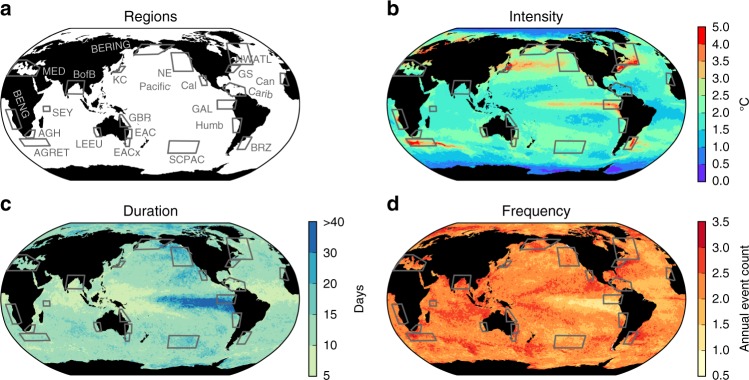Fig. 1.
Global MHW characteristics and case-study regions. 34-year (1982–2015) average properties of MHWs based on application of the MHW definition6 to daily sea surface temperatures from the NOAA OI SST V2 dataset across the globe. a A total of 22 case-study regions investigated. The spatial distribution of MHW properties (0.25° × 0.25° resolution) here includes b annual mean intensity (°C), c duration (days), and d frequency (event counts per year). The four ocean-climate zones are the tropical latitudes, middle and high latitudes, western boundary currents and their extensions (WBCs), and eastern boundary currents (EBCs). These case-study regions are listed as follows: tropical latitudes [Great Barrier Reef (GBR); Seychelles Islands (SEY); Galapagos Islands (GAL); Bay of Bengal (BofB); Caribbean Sea (Carib)], middle and high latitudes [Mediterranean Sea (MED); Bering Sea (BERING); northwest Atlantic (NWATL); northeast Pacific (NE Pacific); south central Pacific (SCPAC)], WBCs [Gulf Stream (GS); Kuroshio Current (KC); Brazil-Malvinas Confluence (BRZ); Agulhas Current (AGH); Agulhas Retroflection (AGRET); East Australian Current (EAC); East Australian Current Extension (EACx)], and EBCs [Benguela Current (BENG); Leeuwin Current (LEEU); Baja California (Cal); Iberian/Canary Current (Can); Humboldt/Peru Current (Humb)]

